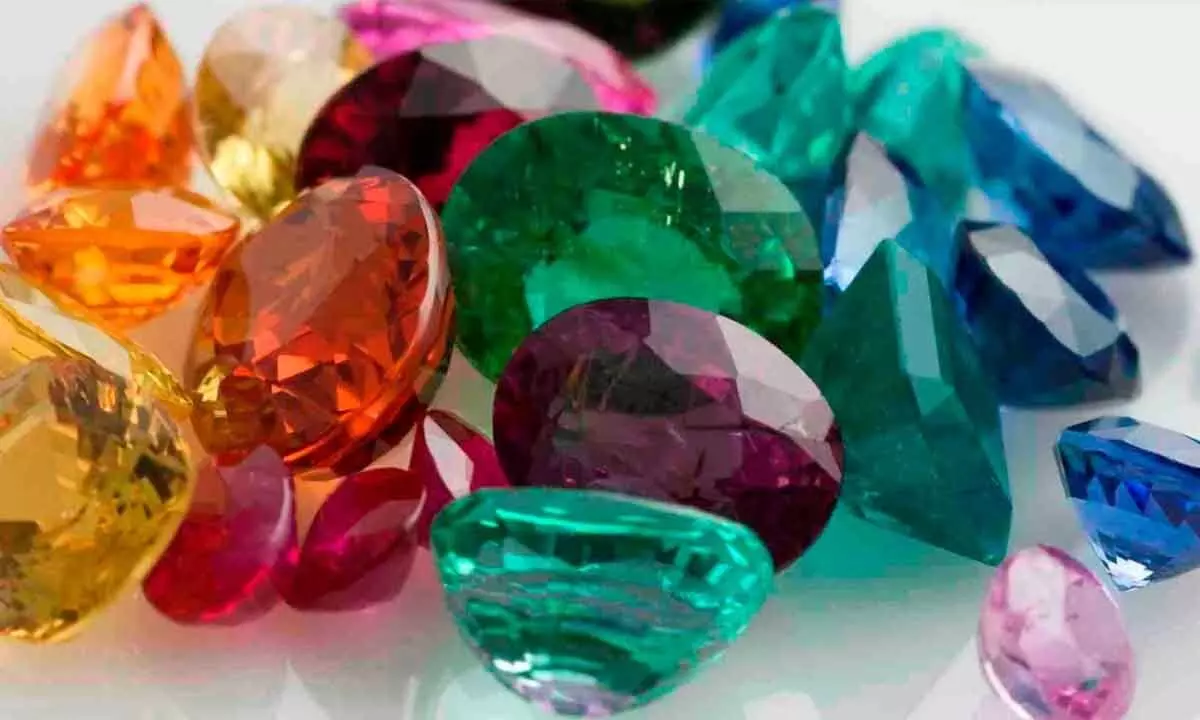Gold market poised to dazzle, despite upheavals
India’s gem and jewellery market size was valued at $ 43.71 billion in 2023
image for illustrative purpose

Despite – or perhaps because of – macroeconomic uncertainties, India’s population resolutely turns to gold. Weddings and festivals are key drivers of gold demand and the country is one of the world’s largest bar and coin markets. There is no doubt that gold retains prominence in the social and financial life of many Indians, both urban and rural
India's gold market is currently unorganized, fragmented and suffers from various inefficiencies. To add to it, the policy makers have not addressed the issues facing the industry. This is due to the fact that there is a lack of a comprehensive vision that takes into consideration the concerns of all stakeholders, and transforms the gold market into an efficient, integrated and organized setup.
China, the largest gold producer, accounts for around 14 per cent of the total global production. One of the reasons for this low demand is its per capita income that is less compared to other gold consuming countries. But with India’s growth trajectory, the per capita demand for gold is likely to increase in the foreseeable future. With limited domestic supply and rising prospects of gold consumption, imports of gold are likely to rise unless suitable measures are taken to address this issue.
Globally, India is the second largest gold market with a demand of around ~800 tonnes and accounts for around 25 per cent of the world’s gold demand. Since domestic production is minimal, the demand is largely met through imports, which is having a seemingly adverse impact on the CAD apart from further implications on the external sector stability.
The B2B business is high sales and low value addition, while the B2C business requires higher value addition. ‘Make in India in Gold’ also means quality products and consumer protection. This can be achieved via ‘Hallmarking’ that sets industry standards.
Global demand for gold is for diverse uses. It covers jewellery fabrication (~54 per cent), technology and industrial purpose (~10 per cent), investments in financial products like ETFs backed by gold and other physical gold investments (~30 per cent) and those held by central banks (~6 per cent).
India’s gem and jewellery market size was valued at $ 43.71 billion in 2023 and its revenue is expected to grow at a CAGR of 17.35 % from 2024 to 2030, reaching nearly $ 133.96 billion.
India gem and jewellery industry involves manufacturing, processing and trading of various gemstones, diamonds, gold, silver, platinum and other precious metals and ornaments. It encompasses a diverse array of products, from traditionally handcrafted jewellery to modern designer pieces, showcasing a blend of craftsmanship, culture, and innovation.
The Indian gem and jewellery market has been a prominent global player, contributing significantly to the country's economy. Factors like cultural significance, growing disposable incomes, evolving consumer preferences, and the wedding and festive seasons fuel market expansion. The industry is predominantly centred in locations like Mumbai, Surat, Jaipur and Ahmedabad, known for their diamond processing, gold jewellery crafting, and skilled artisans. The industry's growth is propelled by factors such as a surge in demand for branded jewellery, rising e-commerce penetration, increasing western influences and the emergence of millennials as significant consumers. The government's initiatives to liberalize policies, boost exports, and encourage investments to contribute to the growth of India’s gem and jewellery market. Trends include a preference for lightweight jewellery, the use of technology in design and marketing, sustainable and ethical practices, and a focus on customization to meet diverse consumer demands.
The IMF forecasts that per capita GDP growth will increase 23% between 2022 and 2026. On the face of it, rising living standards benefit gold but there are other factors in play: the country’s savings rate is declining, and the government’s ‘bank the unbanked’ initiative is creating a sea change in investment choice and availability. Gold must respond if it is to successfully steer a course through these headwinds.
Despite – or perhaps because of – macroeconomic uncertainties, India’s population resolutely turns to gold. Weddings and festivals are key drivers of gold demand and the country is one of the world’s largest bar and coin markets. There is no doubt that gold retains prominence in the social and financial life of many Indians, both urban and rural.
The years ahead will present challenges. But rather than thinking them onerous, we believe there is tremendous opportunity for gold. Regulation of the jewellery industry has already made huge strides in building consumer trust. If new export markets can be developed, the current fragile platform – 90% of jewellery exports go to just five countries – will be diluted. More accessible banking offers a possibility to reach investors who have long understood gold’s safe-haven qualities but now find themselves negotiating a plethora of choice.
In the longer term, the Gold Monetisation Scheme, proposed legislative changes in the mining industry, and resolution of recycling traceability issues may reduce India’s reliance on imported gold.

